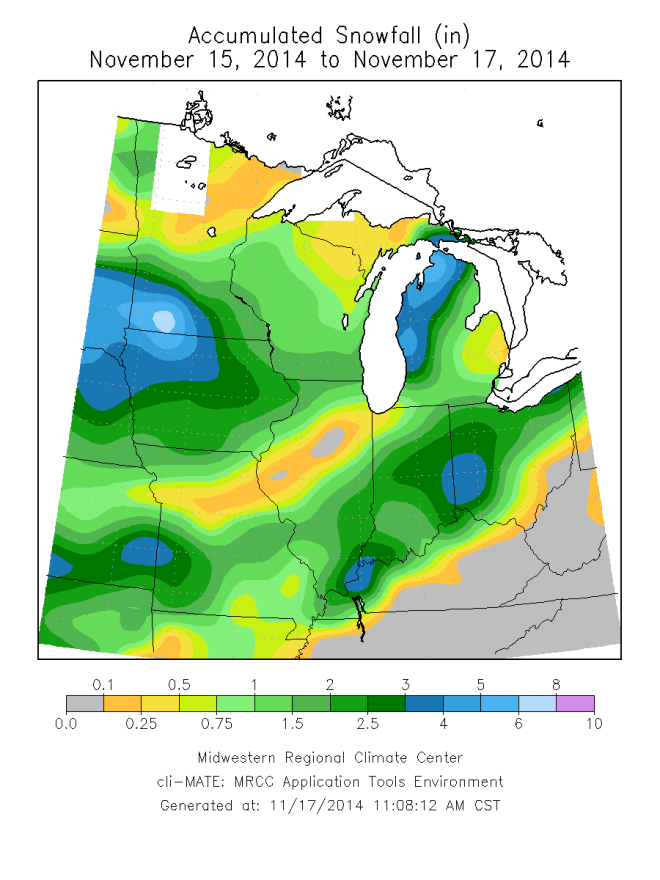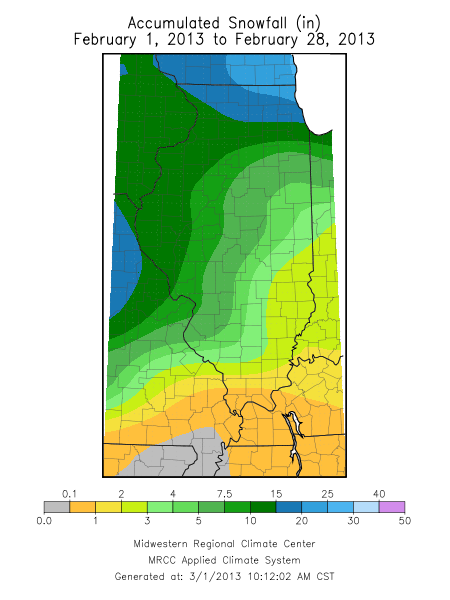 Here is the scene out my backdoor last night, not just frost on the pumpkin but real snow. And the poor annuals in the flower-pot are done.
Here is the scene out my backdoor last night, not just frost on the pumpkin but real snow. And the poor annuals in the flower-pot are done.
As of this morning we had 0.5 inches of snow in Champaign-Urbana. The snow over this weekend was widespread across Illinois but heaviest in the far north and far south (map below). In fact, the heaviest amounts were in southern and eastern Illinois and included Shawneetown with 4.0 inches, Newton with 3.1 inches, and Beecher City, Paris, and Salem all with 3.0 inches. Nationally, 50 percent of the US is covered in snow this morning (second map).  The statewide average temperature for Illinois for November is 37.7 degrees, 6.5 degrees below average. Both Chicago and Rockford have experienced 5 days in a row with temperatures not rising above freezing. And the National Weather Service forecasts for today and Tuesday show that highs will stay in the teens in northern Illinois and in the 20’s in central and southern Illinois. Those are temperatures more typical of January than November. Temperatures are expected to slowly warm up towards the weekend.
The statewide average temperature for Illinois for November is 37.7 degrees, 6.5 degrees below average. Both Chicago and Rockford have experienced 5 days in a row with temperatures not rising above freezing. And the National Weather Service forecasts for today and Tuesday show that highs will stay in the teens in northern Illinois and in the 20’s in central and southern Illinois. Those are temperatures more typical of January than November. Temperatures are expected to slowly warm up towards the weekend.








